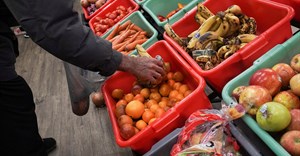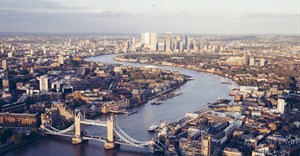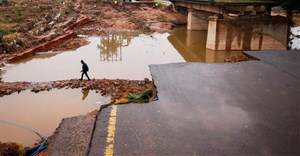
Subscribe & Follow
Drought, climate change and forestry: the role of science and technology

Drought is expected to affect harvests in southern Angola, Botswana, Zimbabwe, Lesotho, Malawi and Madagascar; Namibia is already feeling severe impacts; and in South Africa, KwaZulu-Natal is experiencing what Department of Cooperative Governance and Traditional Affairs spokesperson Lennox Mabaso has called an "epic drought spell".
While crop-producing agriculture is always the major concern during drought periods, there's another sector which faces very immediate dangers when rainfall drops dramatically: forestry. And for the industry, it's not just about losing one year's production: the life cycle is much longer, so there are ten years of production at risk.
Mega-fire days
Fire is the most immediate danger in arid spells. In late July 2007, a series of devastating fires hit Swaziland and Mpumalanga across the border in South Africa. "Propelled by high wind speeds and a prolonged dry season, the fires resulted in damage to thousands of hectares of forest and other vegetation, and direct economic losses estimated in the hundreds of millions of Emalangeni (at par with the South African Rand).
The Ministry of Regional Affairs and Youth Affairs, which also houses the Disaster Management Agency, puts the number of homesteads destroyed at 169 and the total number of affected people at 934 with two casualties." (Wisdom Dlamini, Swaziland National Trust Commission, Review of Swaziland fire disaster using GIS and MODIS data) Dlamini used high-tech - geo-referenced data from the Moderate Resolution Imaging Spectroradiometer (MODIS) onboard NASA's Aqua and Terra satellites to review the fire's impact, demonstrating the value of GIS and remote sensing applications, for early warning, and pre- and post-disaster assessment.
The changing climate brings with it an increased risk of the kind of fires that can wipe out large swathes of the industry; what Professor Bob Scholes, a systems ecologist at the University of the Witwatersrand, calls "mega-fire days, when nothing you throw at a fire can stop it". So it's vital that regional scientists are tracking risks and throwing everything that cutting edge research and technology can offer at mitigation. "We need to be aware of these risks and put mitigation in place for them," says Scholes. "Do not decrease your vigilance around fire and work with your neighbours on fire hygiene."
Scholes is one of South Africa's most distinguished climate change scientists, one of the lead authors in the assessment reports of the Intergovernmental Panel on Climate Change (IPCC). He has been researching climate change impacts for about 25 years, and will present a paper on 'Climate Change: a risk to forests' at the 14th World Congress on Forestry (WCF15) Research Symposium, a pre-event for the main congress, to be held in eThekwini at the International Convention Centre from 7-11 September.
Keeping track of our indigenous forests
It's not just commercial plantations at risk, either: our precious indigenous forests could also be endangered by prolonged drought and extreme weather events, both of which are in the mix of climate change predictions for our region. The small tracts of indigenous forest scattered in the Southern Cape, Eastern Cape and up into the north-east of KZN are not just stores of biodiversity, they are also carbon sinks, elements of watersheds, natural flood control, sources of fuel and building materials and more.
How do you keep track of what is happening in these small but crucial eco-systems? Again, high-tech solutions can be put in play, as Dr Moses Cho, principal research scientist with the Earth Observation Group at the Council for Scientific and Industrial Research (CSIR) in Tshwane, South Africa, has shown in a paper he will be presenting at the Research Symposium.
Cho's work has focused on a fragmented and challenged remnant of indigenous forest in North-eastern KwaZulu-Natal, the Dukuduku Forest, a sub-tropical biome occupying less than half a percent of South Africa's land mass. "The Dukuduku Forest may be small, but it is quite disproportionately rich in biodiversity when compared to the surrounding savannah landscape," says Cho, who will be presenting a paper on a pilot study aimed at monitoring this forest.
The study assessed the use of new multispectral very high resolution (VHR) imagery to capture images of the Dukuduku. It was pioneering work using WorldView 2, a commercial Earth observation satellite owned by DigitalGlobe to get what Cho calls "spectacular resolution, to 0.5 metres - it can really capture individual tree crowns, and the spaces in between".
The satellite images capture subtle colour changes, enabling remote identification: "We have been able to map the dominant tree species in the forest and understand their distribution," says Cho. "When a tree falls or is cut down, we can monitor that and see if an invasive species such as Chromolaena odorata moves in."
As a result, rapid management decisions can be made - down to the level of individual tree crowns. Continuous monitoring at such a detailed level provides early warning signs of any changes (including changes that might increase or predict the risk of fire and other natural disasters); and it's also a tool for monitoring the impact of attempts to rehabilitate degraded areas.
To find out more about the South African forestry research to be presented at the Research Sympsoium, go to WFC2015.














